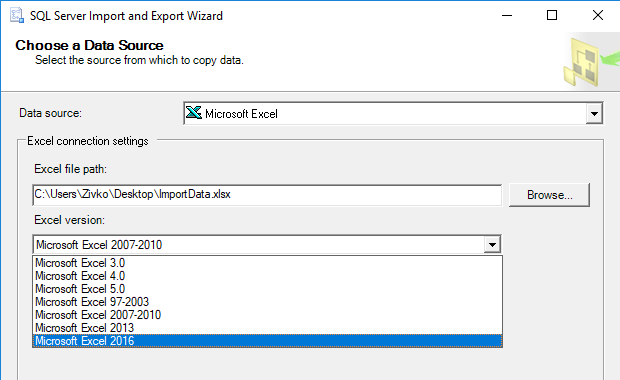The below statement is being used to create a table CAMPUS. I am getting the Error: 'Syntax error in CONSTRAINT clause' 'UPDATE' is highlighted signifying source of error. By removing 'ON UPDATE CASCADE ON DELETE NO ACTION' I am able to create the table with no issues. What is the proper syntax or procedure? (the MS Access 'Help' was of no help) SQL Code: CREATE TABLE CAMPUS( CampusID Counter(1,5) NOT NULL, UnivID Long NOT NULL, CampusName Text(50) NOT NULL, Address Text(50) NULL, Zip Number NULL, Phone Number NULL, CONSTRAINT CampusPK PRIMARY KEY (CampusID,UnivID), CONSTRAINT CampusFK FOREIGN KEY (UnivID) REFERENCES UNIVERSITY(UnivID) ON UPDATE CASCADE ON DELETE NO ACTION CONSTRAINT CampusAK1 UNIQUE (CampusName) ). Access (ACE, Jet, whatever) has supported referential actions in its since Jet 4.0 (Access2000).


Primary and Foreign Key Constraints. This index also permits fast access to data when. (outgoing references). SQL Server 2016 increases the limit for. Ver Pelicula Patch Adams Latino here. Nov 11, 2010 syntax error in CONSTRAINT. Transact-SQL Access 2007 reference and check CONSTRAINTS example in.
However, they are only available in. With effect from Access2003, the Access UI can be placed in ANSI-92 Query Mode, allowing the newer, richer SQL DDL to be executed from the SQL View of a Query. Download Valhallashimmer Rapidshare. Note that ADO (OLE DB) always uses ANSI-92 Query Mode and DAO uses 'traditional' ANSI-89 Query Mode (however IIRC DAO's object model has been enhanced to include all referential actions including the post-89 SET NULL action). Therefore, I speculate that you are getting a syntax error because your are trying to execute ANSI-92 Query Mode SQL DDL while in ANSI-89 Query Mode.
Note: Do not set a PRIMARY KEY constraint on a table that already has a primary key; if you do, an error occurs. • You can use the FOREIGN KEY reserved words to designate a field as a foreign key. If the foreign table's primary key consists of more than one field, you must use a multiple-field constraint definition, listing all of the referencing fields, the name of the foreign table, and the names of the referenced fields in the foreign table in the same order that the referencing fields are listed. If the referenced field or fields are the foreign table's primary key, you do not have to specify the referenced fields. By default the database engine behaves as if the foreign table's primary key is the referenced fields. Bonetown Mods Downloads.
Foreign key constraints define specific actions to be performed when a corresponding primary key value is changed: • You can specify actions to be performed on the foreign table based on a corresponding action performed on a primary key in the table on which the CONSTRAINT is defined. For example, consider the following definition for the table Customers: CREATE TABLE Customers (CustId INTEGER PRIMARY KEY, CLstNm NCHAR VARYING (50)) Consider the following definition of the table Orders, which defines a foreign key relationship referencing the primary key of the Customers table: CREATE TABLE Orders (OrderId INTEGER PRIMARY KEY, CustId INTEGER, OrderNotes NCHAR VARYING (255), CONSTRAINT FKOrdersCustId FOREIGN KEY (CustId) REFERENCES Customers ON UPDATE CASCADE ON DELETE CASCADE Both an ON UPDATE CASCADE and an ON DELETE CASCADE clause are defined on the foreign key. The ON UPDATE CASCADE clause means that if a customer's identifier (CustId) is updated in the Customer table, the update will be cascaded through the Orders table. Each order containing a corresponding customer identifier value will be updated automatically with the new value. The ON DELETE CASCADE clause means that if a customer is deleted from the Customer table, all rows in the Orders table containing the same customer identifier value will also be deleted. Consider the following different definition of the table Orders, using the SET NULL action instead of the CASCADE action: CREATE TABLE Orders (OrderId INTEGER PRIMARY KEY, CustId INTEGER, OrderNotes NCHAR VARYING (255), CONSTRAINT FKOrdersCustId FOREIGN KEY (CustId) REFERENCES Customers ON UPDATE SET NULL ON DELETE SET NULL The ON UPDATE SET NULL clause means that if a customer's identifier (CustId) is updated in the Customer table, the corresponding foreign key values in the Orders table will automatically be set to NULL.